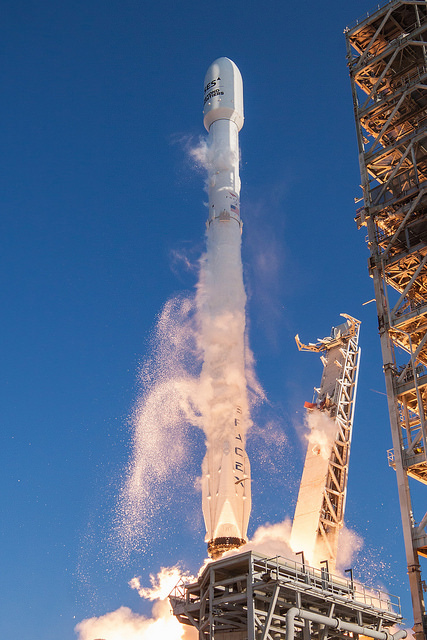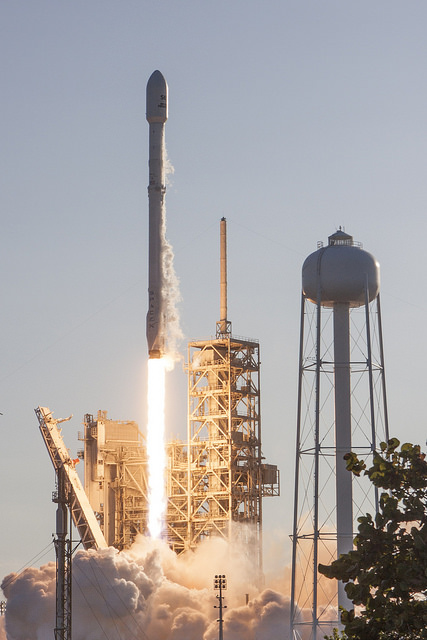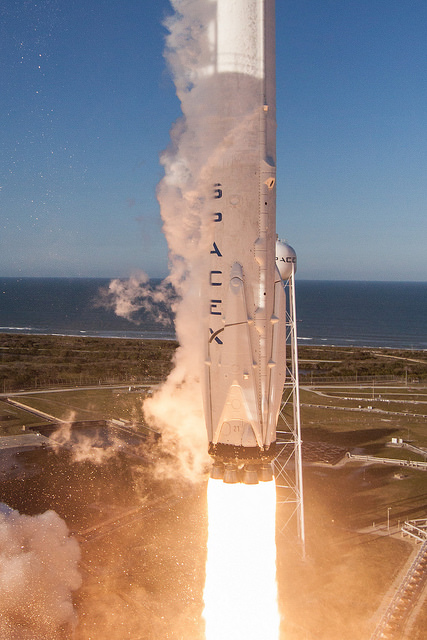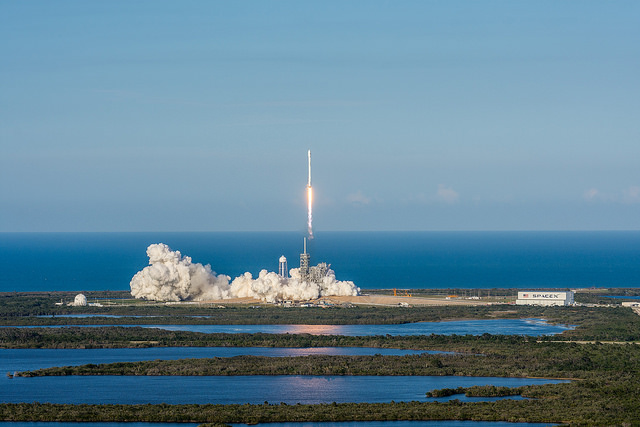
The competition to be a commercially competitive space launch provider gets far more serious with SpaceX successfully launching a reused Falcon 9 booster to get SES-10 into a geosync orbit.
On the same day as SpaceX made such tremendous progress, two competitors dropped further behind.
Competition speeds up

I was so fortunate as to check my Twitter feed as SpaceX began its live coverage of the launch. It was such a joy to watch the successful launch and an even bigger thrill to see Main Engine Cutoff, which meant the reused booster did its job.
The last high point of the day, was seeing the video of the booster sitting upright on the recovery barge. Hearing the SES-10 com sat was successfully in orbit was the last bit of icing on an already tastefully delightful treat.
Recovering a successfully reused booster is a really big deal. The most expensive part of a launch is the first stage. Having the ability to reuse a booster will allow SpaceX (and anyone else who can figure out how to do it) to cut their costs even further.
A couple of articles for more detail:
3/30/17 – Space.com – SpaceX demonstrates rocket reusability with SES-10 launch and booster landing – The SES-10 satellite was in orbit on schedule and is functioning normally. It carries 55 transmitters in the Ku-band, which will provide television coverage and internet connectivity across Latin America. The sat weighs in at 5,300 kilograms.
Later this year, SpaceX will launch a new variation of the Falcon 9 which is designed for multiple reuses.

3/30/17 – Wall Street Journal – SpaceX Lofts Commercial Satellite With Reused Rocket In Historic Flight – Article says Elon Musk announced that SpaceX has spent around a billion dollars developing the ability to reuse boosters.
This was the 9th time they have recovered a booster.
SpaceX hopes to have the capability within a year to turn around a booster with 24 hours and get it back into orbit.
They hope to reuse a booster up to ten times or even more.
3/31/17 – Space.com – In Photos: SpaceX Launches, Lands 1st Reused Falcon 9 Rocket – nice photos

Other competitors slow down
On the same day as SpaceX historic breakthrough, Behind the Black reports two competitors are falling behind.
3/30/17 – Behind the Black – SLS faces more delays – The ESA is building the service module that will go into SLS. A delay by ESA in their development will push back the first SLS launch, which is currently scheduled for the end of 2018.
Another possible delay will be the considering adding a crew to the first otherwise unmanned launch. That will cause more delays and increase the cost hundreds of millions.
Article points out SLS is more an non-stop jobs program than a serious effort to get back to the moon.
3/30/17 – Behind the Black – Practically every Russian Proton rocket engine defective – According to the linked article, essentially all of the stockpiled engines used on the second and third stage of the Proton rocket are defective and must be reworked.
This will disrupt the Russian launch schedule. My notes show that 8 of the 33 launches scheduled for 2017 were going to be on the Proton.
If the BtB’s concern that this issue, whatever it might be, also affects Soyuz, that would delay another 19 launches in 2017.
So both SLS and Russia are slowing down while SpaceX picks up speed.
One thought on “The space competition heats up. Aaaaand some competitors slow down.”